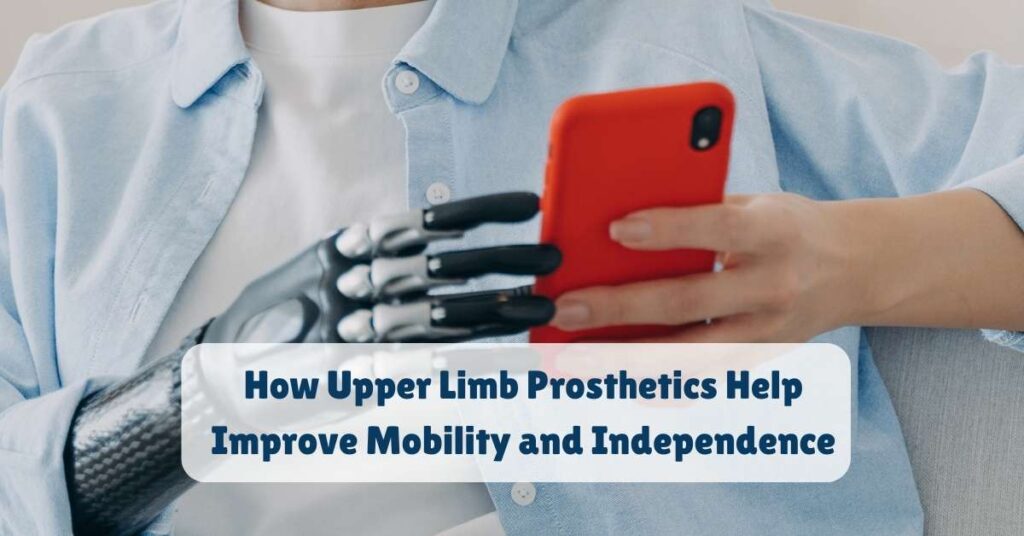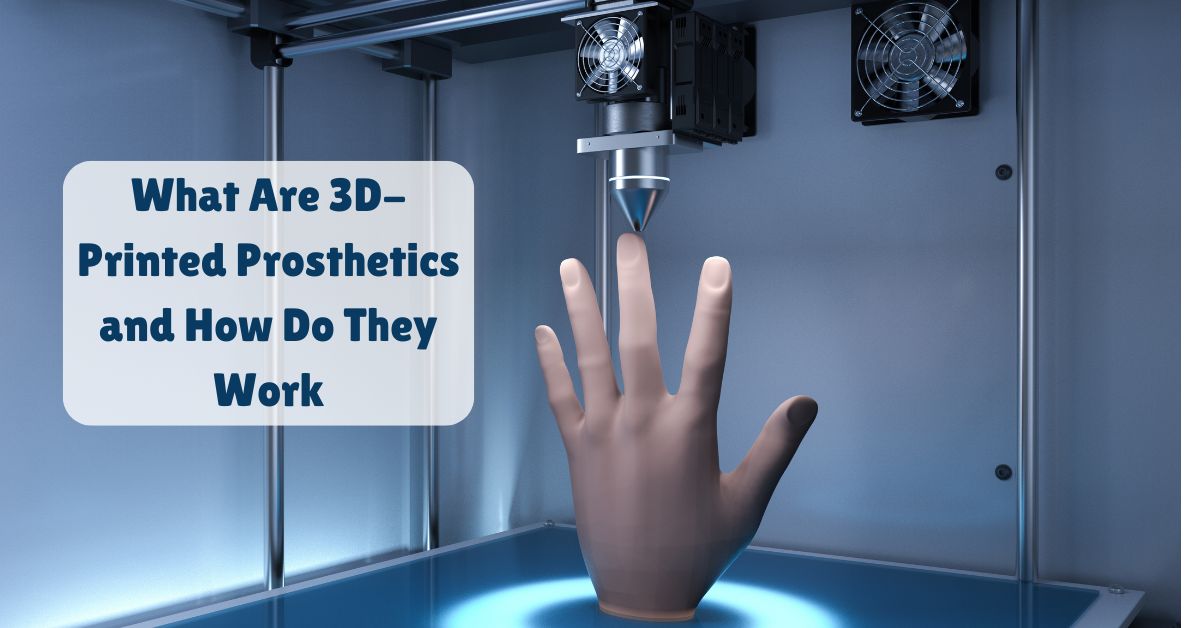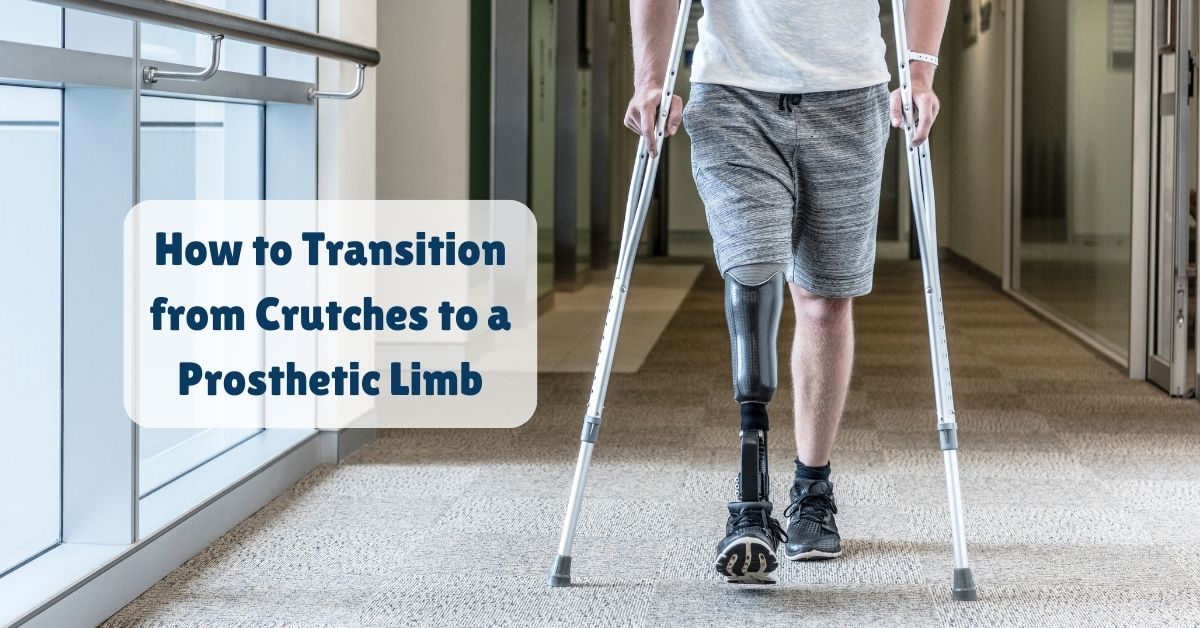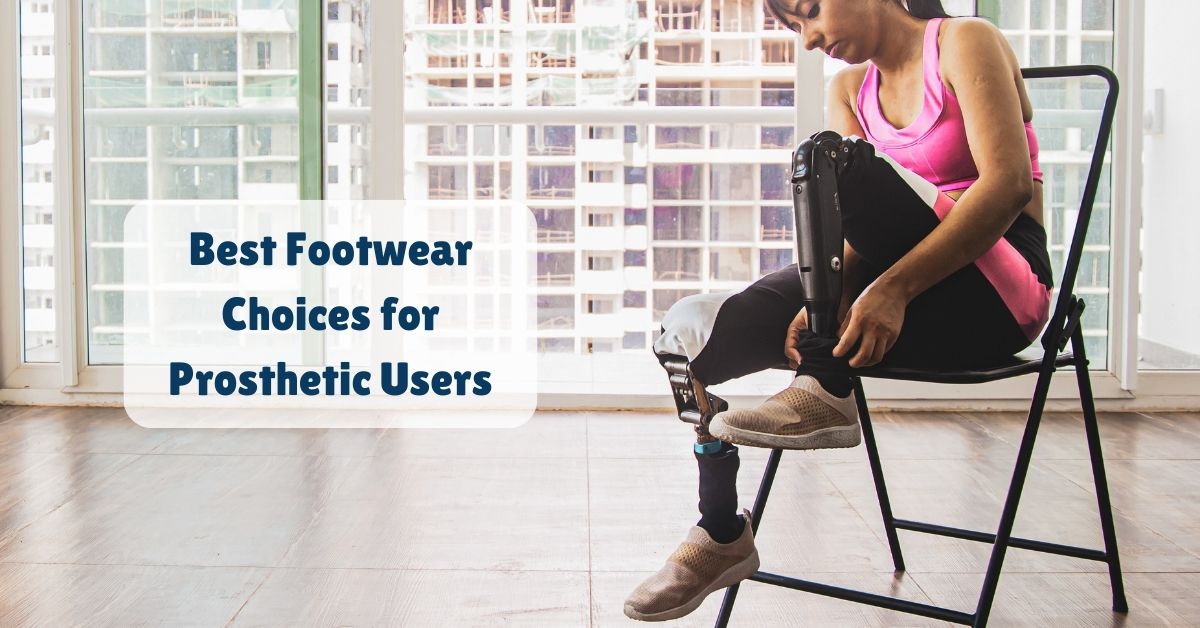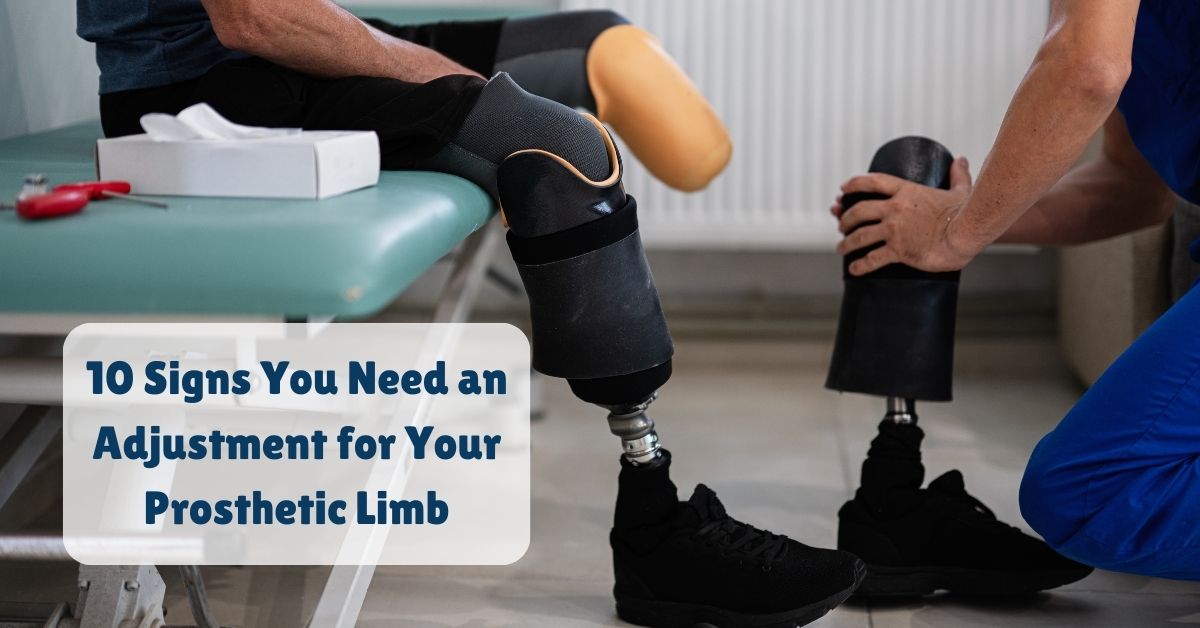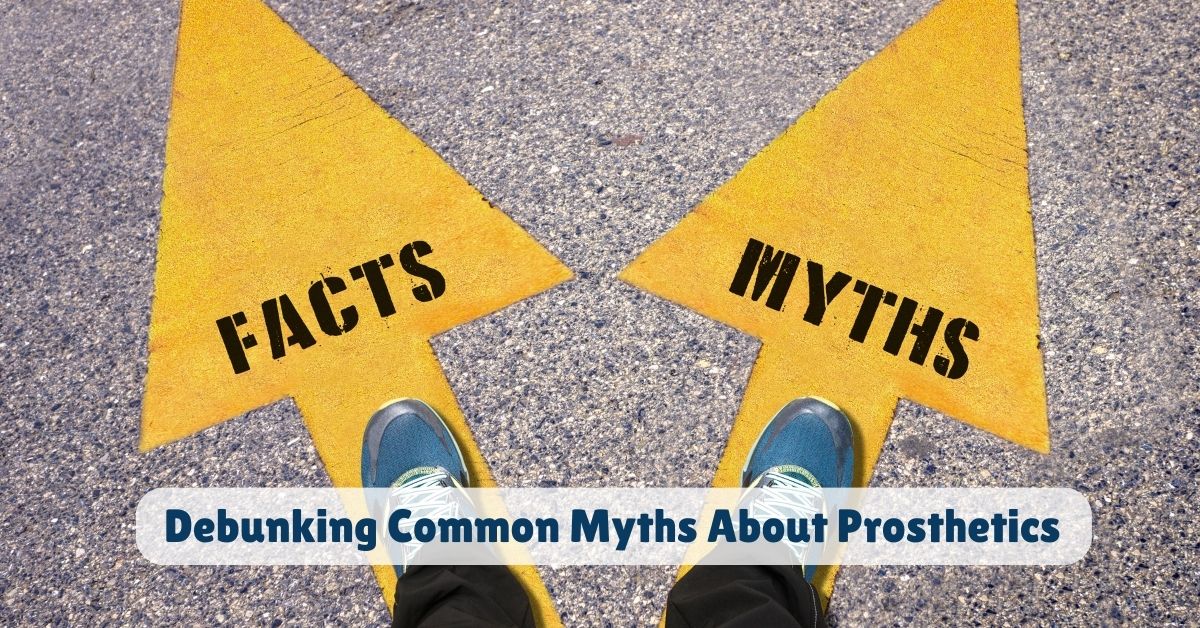The loss of an upper limb is a life-changing event, affecting a person’s ability to perform even the most basic tasks. For many, this can feel overwhelming, but upper limb prosthetics have made a significant difference in the lives of amputees, offering the possibility of restored mobility and independence. Upper limb prosthetics are not just tools; they are lifelines that help people regain control over their lives, enabling them to do things they may have thought were no longer possible.
Understanding Upper Limb Prosthetics
Upper limb prosthetics are artificial devices designed to replace the function and appearance of a person’s arm or hand. These devices range from basic, non-functional cosmetic limbs to highly advanced prosthetics that can mimic the natural movement of a real hand or arm. Depending on the level of amputation and the needs of the individual, a prosthetic limb can be customized to offer varying levels of mobility, dexterity, and strength.
There are several types of upper limb prosthetics, including:
- Passive Prosthetics: These are primarily for cosmetic purposes and do not have any functional movement. They help restore appearance but are not designed for active use.
- Body-Powered Prosthetics: These use cables and harnesses connected to other parts of the body, like the shoulders, to move the artificial limb.
- Myoelectric Prosthetics: These are powered by electrical signals generated by the user’s muscles. When the user contracts certain muscles, sensors detect the movement and control the prosthetic accordingly.
- Hybrid Prosthetics: These combine body-powered and myoelectric elements for more versatility and control.
How Prosthetics Improve Mobility?
Restoring Function
The most obvious way upper limb prosthetics improve mobility is by restoring function to the affected area. When someone loses an arm or hand, simple tasks such as picking up a cup of water, turning a doorknob, or holding a pen become incredibly difficult, if not impossible.
With the help of an upper limb prosthetic, these basic tasks can once again be performed. Prosthetic arms and hands are designed to replicate the movements of a natural limb as closely as possible, allowing users to regain a wide range of motion.
For example, a myoelectric hand can open and close, grip objects, and even perform more precise movements like typing on a keyboard or holding utensils. Over time, users can train their muscles to control the prosthetic, making these movements feel more natural and seamless.
Increasing Range of Motion
For those with amputations above the elbow or shoulder, upper limb prosthetics can significantly increase their range of motion. While losing a limb severely limits the body’s movement, a prosthetic arm can allow for improved shoulder, elbow, and wrist mobility. Some advanced prosthetics even allow for multi-axis movements, which means the limb can move in different directions, much like a natural arm.
Having a prosthetic with multiple joints can greatly improve a person’s ability to carry out daily tasks, such as lifting objects, reaching out to grab something, or performing work-related activities that require a full range of motion.
Helping with Balance and Posture
It’s easy to forget that losing an arm or hand can also affect balance and posture. Without the weight and presence of a limb, the body can become unbalanced, leading to poor posture and discomfort. This imbalance can also make walking and other physical activities more difficult.
A well-fitted upper limb prosthetic helps to restore the body’s balance. By replacing the lost limb with a prosthetic, individuals can improve their posture and distribute weight more evenly. This allows for easier movement and reduces the strain on other parts of the body, such as the lower back, hips, and shoulders.
Supporting Bilateral Activities
Certain activities require the use of both hands, such as tying shoes, folding laundry, or carrying groceries. When one limb is missing, these bilateral activities become much more challenging. Upper limb prosthetics give users the ability to once again perform these tasks by providing a functional second limb.
With a prosthetic hand or arm, people can engage in two-handed activities, making daily chores and personal care much more manageable. Whether it’s driving, dressing, or preparing food, having two working hands—one natural, one prosthetic—gives individuals more control over their daily lives.
How Prosthetics Help with Independence?
Regaining Control Over Daily Activities
One of the biggest emotional challenges faced by amputees is the feeling of dependency on others for tasks they once handled on their own. From getting dressed to cooking, many daily activities require the use of both hands, and the loss of a limb can make these tasks difficult or impossible to perform alone.
Upper limb prosthetics provide the ability to regain control over these activities. Whether it’s brushing teeth, buttoning a shirt, or holding a phone, a prosthetic hand or arm allows users to do more independently. This restoration of self-sufficiency is crucial for mental and emotional well-being, as it empowers individuals to feel capable and confident in their abilities.
Reintegrating into the Workforce
For many people, the ability to work is tied to their sense of independence. Losing a limb can create obstacles to performing work tasks, especially in jobs that require manual labor, typing, or other physical activities. Upper limb prosthetics can make it possible for individuals to return to work and perform their job duties more efficiently.
Whether someone works in an office, construction, or any other field, the use of a prosthetic limb can help them regain their professional independence. Modern prosthetics are designed to be highly functional and adaptable, allowing users to perform a wide range of tasks that might otherwise be difficult or impossible.
Participating in Hobbies and Social Activities
Beyond work and daily tasks, independence also means being able to participate in the hobbies and activities that bring joy and fulfillment. Many people with upper limb prosthetics are able to return to activities they enjoyed before their amputation, whether it’s sports, playing a musical instrument, painting, or gardening.
With the help of specialized prosthetic attachments, individuals can even participate in high-impact sports like cycling, skiing, or rock climbing. The ability to continue enjoying life’s pleasures, without the limitations imposed by a missing limb, is a powerful way to regain a sense of independence.
Boosting Self-Confidence
Independence is closely tied to self-esteem and confidence. The ability to take care of oneself and live independently can significantly improve mental health and overall quality of life. Upper limb prosthetics help boost self-confidence by allowing people to engage in social activities, work, and personal care without feeling reliant on others.
For many amputees, wearing a prosthetic also helps them feel more comfortable in public, as it reduces the sense of being “different” or “incomplete.” This can lead to a more positive self-image and greater emotional well-being.
Challenges and Adjustments
While upper limb prosthetics offer incredible benefits, they are not without challenges. It can take time to adjust to wearing and using a prosthetic, especially for those who have lost a limb later in life. Physical therapy, occupational therapy, and regular training are often necessary to help users get the most out of their prosthetic device.
There may also be periods of discomfort or frustration, particularly in the early stages of using a prosthetic. However, with patience and the right support, most people find that the benefits far outweigh the challenges.
The Psychological and Emotional Impact
For many people, the physical benefits of upper limb prosthetics go hand-in-hand with emotional healing. Losing a limb can cause feelings of grief, loss, and isolation. The use of a prosthetic limb not only helps to restore physical abilities but also supports emotional recovery. Regaining the ability to perform tasks independently can greatly improve an individual’s self-esteem and overall mental health.
The process of adapting to a prosthetic also builds resilience and confidence. Every milestone—whether it’s mastering a simple task like writing or performing more complex activities—contributes to a sense of achievement and personal empowerment.
Community and Support Networks
Many people with upper limb prosthetics find comfort in joining support groups or communities of other prosthetic users. These groups provide an opportunity to share experiences, learn new techniques for using prosthetics, and find emotional support from those who truly understand the journey. These networks can be both local and online, offering a valuable resource for new amputees who are adjusting to life with a prosthetic limb.
Conclusion
Upper limb prosthetics play a important role in helping individuals regain mobility and independence after the loss of an arm or hand. By restoring function, improving range of motion, and providing support for daily activities, these devices enable people to live fuller, more active lives. While adjusting to a prosthetic can be challenging, the ability to regain control over one’s life and independence is invaluable.
As technology continues to advance, prosthetic devices will only become more functional, adaptable, and lifelike, offering even greater opportunities for amputees to thrive in their personal and professional lives.
At Proactive Technical Orthopaedics, top prosthetic manufacturer in India, we understand the importance of finding the right prosthetic solution tailored to your unique needs. Our dedicated team of experts is here to guide you every step of the way, Contact today to schedule a consultation.
If you’re unsure about what’s best for you, consult with your healthcare provider or prosthetist. They can provide guidance tailored to your situation, helping you find the right balance between comfort, safety, and the health of your residual limb.

